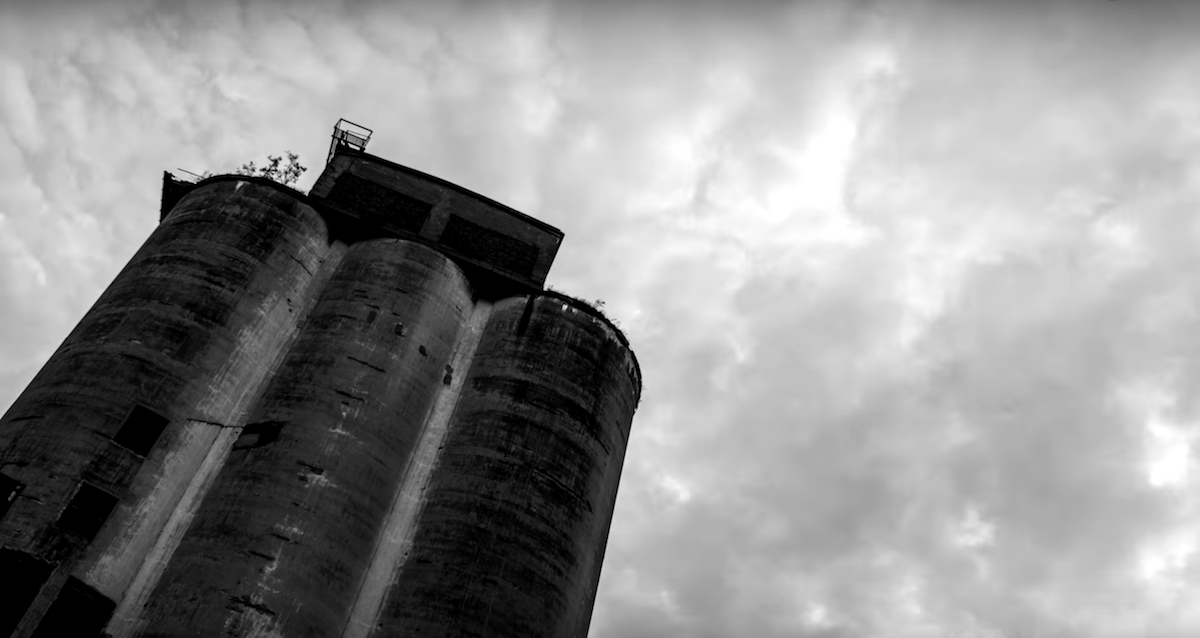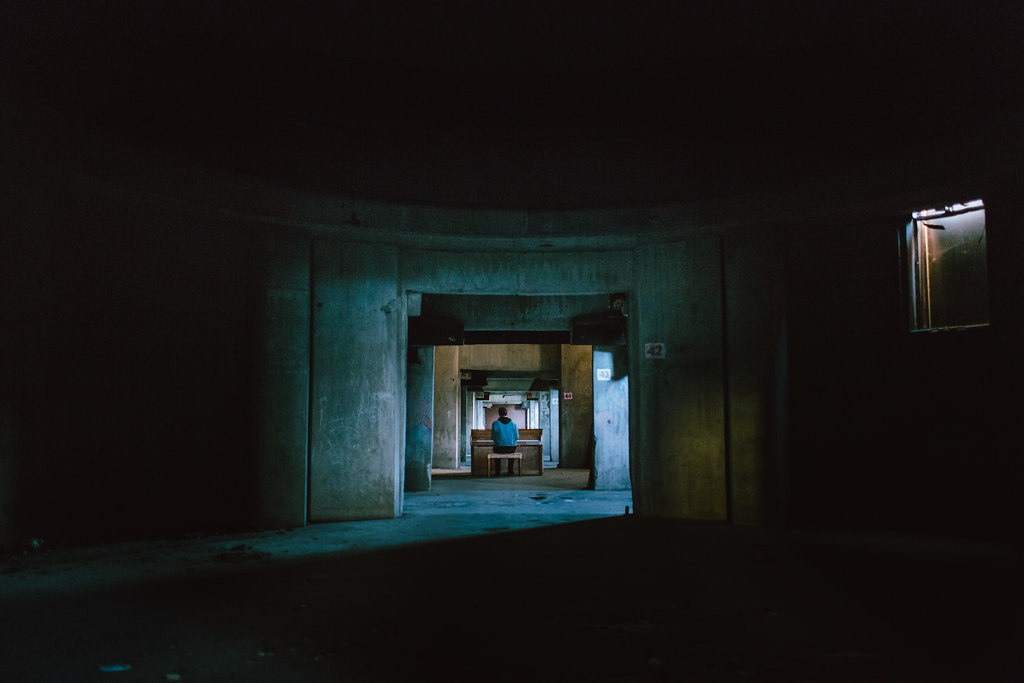How To Record In A Grain Silo
In this piece, solo piano recording artist Bean Friend takes on a journey through the complex process of writing and recording an album within an abandoned grain silo, and the unique challenges and opportunities presented through the use of such a specific space.
____________________________
Guest Post by Bean Friend on Soundfly's Flypaper
Earlier this year, I was delighted by a dynamic new solo piano album called The Moving Decade. Of all the types of albums to make sound original, surely solo piano has to be one of the most difficult, given how often it’s been done. But this album IS original — it sounds more like an ambient or electronic album than a piano album, with swirling reverb, languishing overtones, and escalating waves of sound emanating from the sometimes unrecognizable piano tones at the center. Below, the artist Bean Friend tells us how he created it, a tale involving a Craigslist piano, experimental mic placements, and naturally, an abandoned grain silo.
He’s sharing the world premiere of his new music video with us exclusively above, and below he goes into exactly where the idea to record the album came from, how he managed to capture so many amazing tones naturally, and some beautiful, nostalgic photos of abandoned agricultural landscapes. — Ian Temple

“It would be amazing to bring a piano in here,” I thought to myself, as I listened to the reverberating sound waves bouncing up, down, and around the 120 ft. cylindrical cement structure.
I was in the middle of an abandoned grain silo in Buffalo, NY. Once a thriving industrial city and the largest grain exporter in North America, Buffalo boasts a marvelous place dubbed Silo City, where a large collection of massive grain silos stand abandoned along the Buffalo River. A friend had told me about Silo City and the possibility of using the spaces for artistic endeavors. Having just recently moved to Buffalo from Toronto, I knew I had to investigate.
Step 1: Scout the silos.

Step one was to find out who owned or managed these silos so I did not get arrested for trespassing. That proved to be easier than I thought as I found some “locals” who were on the property the day I drove over. After the initial “Hi, I’d like to check out your silos” type of discussion, I was amazed at how willing the guys were to help me with my project. I owe them my gratitude, since I never would have gotten this project off the ground if they threw me out that first day!
Step 2: Find a piano.

Okay, I thought to myself, now how am I going to find a piano and get it in here? I found four different Craigslist ads for a “free piano” in the city of Buffalo. The description usually reads, “Free piano… you just need to move it.” So, I contacted all of the kind folks who were giving away their pianos. I went to their homes and played the pianos. I wanted to make sure they worked properly, and that I chose the best free piano that I could find. Free is only a great price if it works!
Based on sound, touch, and condition, I chose my piano. It sounded beautiful, and it was actually in great shape. It was a console piano — a little smaller than an upright — so it wouldn’t be too difficult to move.
That same day, I rented a U-Haul and called up a few strong buddies to help with the move. (Thank you Tim and Shawn!) Without too much trouble, we loaded the piano in the truck and headed down to Silo City.
The following day, my friend Sharon came down to the silos and tuned the piano for me. The conditions in the belly of the silos are unique. It’s wet and damp, much like a basement that doesn’t see sunlight. It was the end of September, so it was cold at night and warmer during the days. Because of this, the piano needed to be tuned a few times throughout the recording process.
Step 3: Set up the space.

Next, I brought down my recording equipment: a laptop, an audio interface, a cardioid AT2035 microphone, a pair of Rode NT5 condenser microphones, cables, extension chords, microphone stands, a Century Stand, blankets, and clamps.
Because there are interconnecting “doorways” between the silos, I decided to build plywood partitions to make sure the sound was traveling vertically within the silo that I was playing in, and not being lost down to the adjacent silos. I thought that this would give me more of an opportunity to capture the reverb effect that I was looking for.
Step 4: Experiment, experiment, experiment.
I experimented with mic placement throughout the five weeks that I recorded. It was different every time. As weeks passed, I felt like I was getting closer to truly capturing the amazing reverb of the silos. Then, I decided to roll the piano towards the perimeter of the room. This changed everything.
With the piano at the perimeter of the room, it was now under a metal lip that rings low around the cement structure, about 12 feet off of the ground. The metal rim blocked the immediate sound waves of the piano from going straight to the top of the silo. I was able to pick up the immediate waves as well as the long waves traveling up and down the silo. This is what I had hoped for!
I used the AT2035 cardioid as my close microphone, located between two and three feet away from the base of the piano. I enclosed it with a blanket using clamps and chairs to block out as much room sound as I could.
For the room mics, I pointed the pair of NT5s at an upward angle about 20 feet in the air, above the metal lip. By the time the sound waves reached the top of the silos and bounced back down towards the room mics, the sound was very ambient. I was delighted that there was barely a transient — or attack — but rather a warm, compressed sound.
Step 5: Write a bunch of songs.

I wrote all the music in the silos, as I wanted to be influenced and inspired by the room completely. I played a series of long arpeggios and I was delighted by what the room mics were picking up. If I played softly enough, no transient would be picked up by the room mics. It sounded like an endless, swirling chord. As I played the arpeggio, it was like I was feeding this chord. This gave a wonderful effect, almost like a soft synth pad. This configuration inspired me to write many of the pieces of the album on the spot, including “Float Away,” “The Mist,” and “Distant Notion.”
At the end of these songs, you can hear the “swirling chord” effect from the room microphones.
The silo offered amazing reverb, but it was an imperfect room. Even though it was a well-built cement structure, I couldn’t believe what my room microphones were picking up. Construction workers in the distance, geese, cars, and the steady hum of nearby factories can all be heard on the album. Even a cricket makes a guest appearance on “Copper Light.”
The final product is my first solo album, The Moving Decade. It was entirely recorded in the grain silos with no studio magic. Just one piano, a few microphones, and a silo. And some long chilly evenings in the shadows….